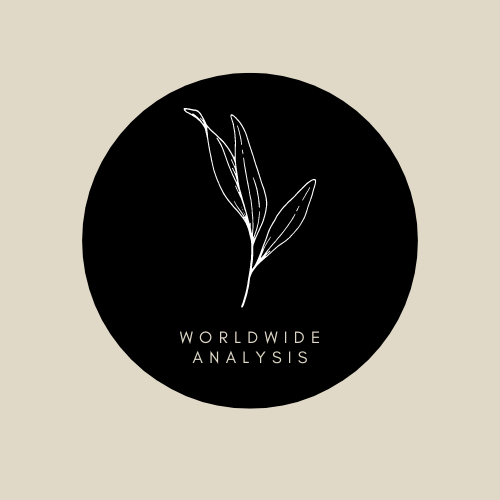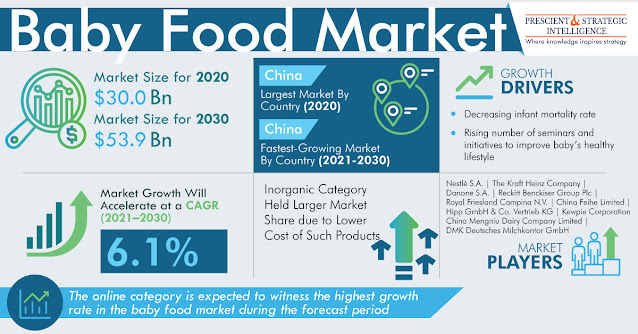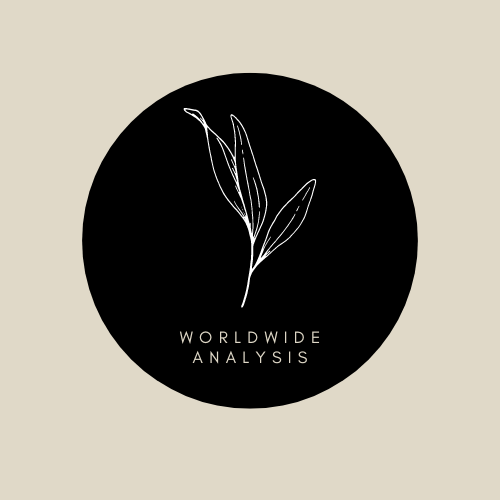Almost 74% of the English mothers were employed in 2018, as per the Office for National Statistics (ONS). Similarly, in 2019, 50.6% of the working-age women in Australia had a job. The entry of women in the workforce has changed the family dynamics, with caring for children becoming increasingly difficult because of the long and hectic working hours for both parents. One of the most-critical aspects of caring for children is food and nourishment, which parents are finding increasingly difficult to provide on account of having little time at home.
As a result, P&S Intelligence sees a bright future for the baby food market, which already valued $30.0 billion in 2020. This number is expected to reach $53.9 billion by 2030, at a 6.1% CAGR between 2021 and 2030. Baby food is essentially pre-cooked or processed food that can be fed to children straight out of a can or after warming it up. With advances in food processing technologies, a variety of food products are available for babies, such as infant formulae, cereals, snacks, soups, and pureed food.
Read More: Baby Food Market Analysis and Demand Forecast Report
Among these, infant formula consumption is the highest despite the fact that healthcare organizations all over the world recommend women to exclusively breastfeed their babies for the first six months, as breastmilk contains all the essential nutrients and antibodies required by neonates. This is because several women experience lactation issues, including a lower-than-adequate production of breastmilk. Similarly, many children aren’t able to get used to breastfeeding as quickly, which creates a high requirement for infant formula, which is designed to fulfill the same purpose as actual breastmilk.
This is why after initially going down during the COVID-19 pandemic, infant formula sales and those of other baby food products have been burgeoning. Since COVID is an infection, immunity is of the utmost importance to fight it off. Thus, with the increasing awareness of the disease and escalating concerns for infants, parents’ focus on providing infants with proper nourishment has risen in the last one year, which has been driving baby food demand around the world.
Moreover, the easy availability of these products on online platforms has made the lives of working parents a lot easier, even during these dark times. With the social distancing and movement restrictions orders forcing people home and leading to the closing down of shops selling non-essential stuff, online sales have picked up rapidly. “The dramatic rise in e-commerce amid movement restrictions induced by COVID-19 increased online retail sales’ share of total retail sales from 16% to 19% in 2020.”, says the United Nations Conference on Trade and Development (UNCTAD).
Till now, Asia-Pacific (APAC) has been the largest baby food market, and product sales here are also expected to rise the fastest in the coming years. Even though the birth rate (number of births per 1,000 people) has declined massively in the last 50 years, the number of total births in APAC has steadily risen because of its already large population of fertile women. Moreover, with the rapid urbanization, more of the regional populace is finding work every year, which is raising concerns regarding proper baby care.
Thus, as more women find work, the demand for baby food will rise, with parents getting lesser time to cook proper meals.



